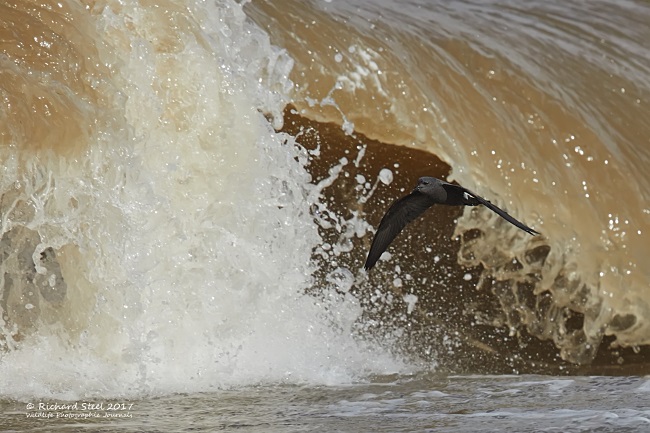Dee Estuary Birding
Monthly Newsletter...
September 2024
Newsletter
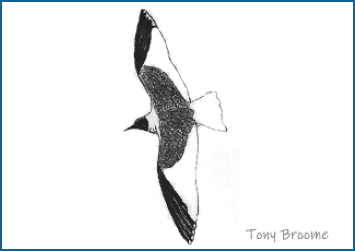
Species Spotlight - Little Stint
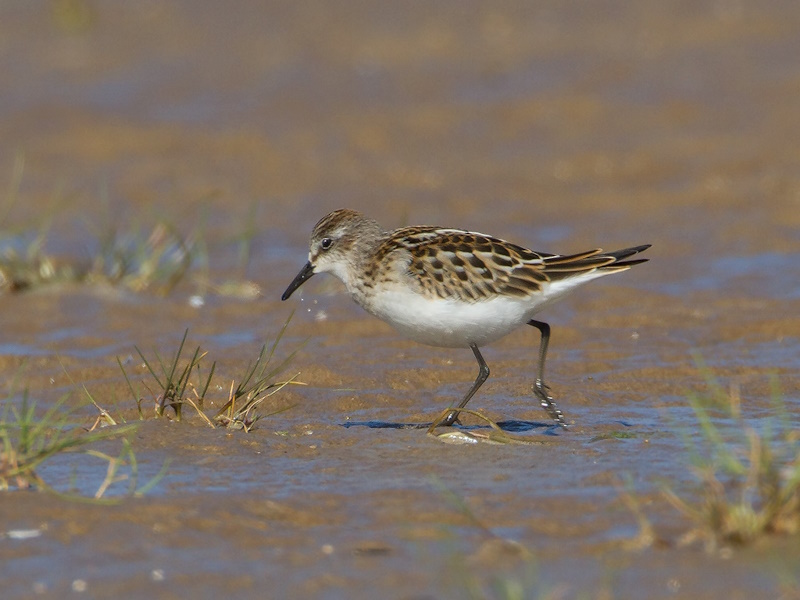
On September 22nd 1960 there were 350 Little
Stints
at Shotton Lagoons here on the Dee Estuary (Ref 1); that is still the
highest count ever recorded in the British Isles. This was during an
unprecedented influx of Little Stints into the UK with total numbers
probably well in excess of 3,000 (Ref 2). 1996 was the next really big
influx, we didn't have such large numbers here that year but nearby
Frodsham Marsh had the highest count in the country with 250 - 300 on
September 29th. We couldn't match that but still had some
impressive flocks and I quote from the 1996 Cheshire and Wirral Bird
Report:
"On
the Dee 16 were at Heswall on Sept 23rd and 39 on 26th; max at Inner
Marsh Farm were 22 on Sept 26th, (when 11 were also at Boathouse
Flash), and 14 in Oct; Denhall Marsh often held birds in the first half
of Oct, max 40+ on 7th."
Most years numbers peak in September when the
juveniles pass through, as demonstrated in the bar chart below. Very
much like Curlew Sandpipers the young tend to follow the
coastline whereas the adults fly overland. We get large numbers of
juveniles here when they've had a good breeding season combined with an
easterly wind which diverts them west from the more direct route along
the North Sea coasts.
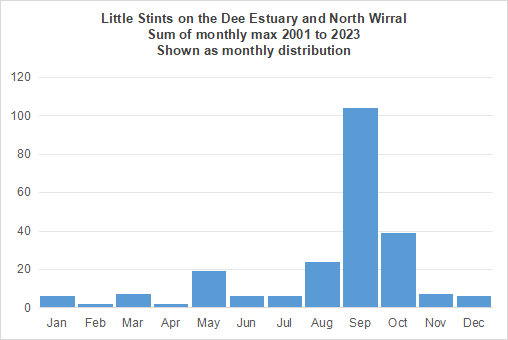
The spring passage is always much smaller with just the odd one or two adults spotted on their way north. The small number we do see usually pass through in May, June records are very scarce so it was good to see three at Meols this year on June 11th, 2024. To me that seemed a very late date and my first thought was that these must be non-breeders. But a quick look at my BWP (Ref 3) revealed that Little Stints don't start laying eggs until the last week in June so these three still had plenty of time to fly to the high arctic in northern Norway, or even further east to Siberia. Incidentally, there has only been one other June record this century on the Dee Estuary, that was six at Burton Mere Wetlands (BMW) in 2006 - also on June 11th. Birds passing through so late are probably ones which spent the winter far to the south - many spend the winter as far as South Africa which means they fly as much as 12,000 km to reach their Siberian breeding grounds, an incredible feat for such a tiny wader (Ref 4)!
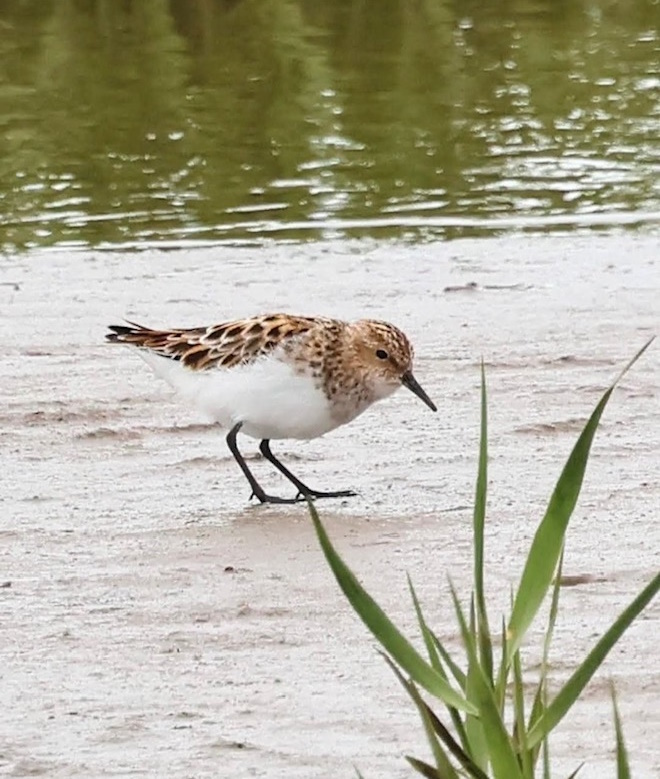
We don't often see adults in full breeding plumage!
The
second bar chart (below) shows the sum of monthly max for each year
this
century. Although not as many birds were involved as 1960 or 1996 the
influx in 2001 made it another exceptional September. One thing about
these large influxes is that they tend to be concentrated over just a
few days and in 2001 20 were on Burton Marsh on Sep 22nd and 23 at
Inner Marsh Farm on Sep 25th and 26th and that was about it.
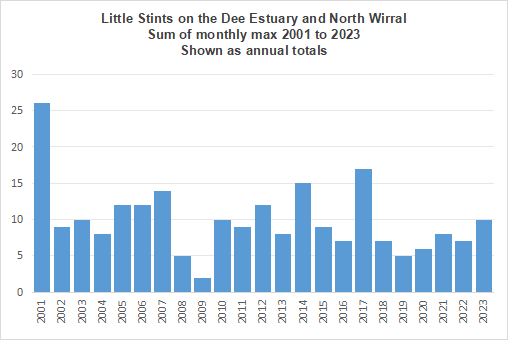
After 2001 numbers have been much lower and the bar chart shows no obvious trend which is probably what we would expect as we are on the extreme western edge of their range. But the current status of the European breeding population as a whole has been subject to some debate - Wetlands International reckoned, in 2012, that they were steadily increasing but that the confidence in the data was low (Ref 5). However, a more recent study, at Ottenby Bird Observatory in southern Sweden, found a significant decrease (Ref 6).
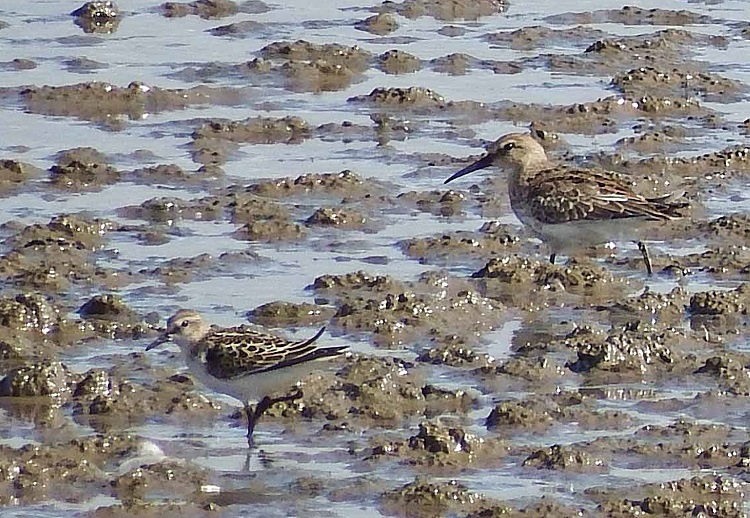
© Tanny Robinson
Where to see Little Stints
Little Stints can be found just about anywhere - on sandy beaches on our Liverpool Bay coasts, on thick mud inside the estuary or at freshwater sites such as BMW. And it is BMW which has more records than anywhere else and notable counts in recent years include 10 in September 2017 and six as recently as September 2023. They've also had over wintering birds there with singles present throughout the winters of 2017/18 and 2021/22. High tide at Hoylake in September can result in really close views, they are nearly always with Dunlins and, if we're lucky, Curlew Sandpipers. But remember that, even in September, they are likely to be very scarce and you will need some luck to see one!

References
1. T. Hedley Bell, The Birds of Cheshire, 1962.
2. British Birds 53: 532 (Recent Reports and News - 1960).
3. Birds of the Western Paleartic app. NatureGuides Ltd, 2020.
4. Ed Stubbs, "Small Wonder", Birdwatch magazine 387 (September 2024).
5. Wetlands International, Waterbird Population Estimates (Fifth edition), 2012.
6. J. Waldenstron et al. , Long-term trends in abundance...... of Little Stints during autumn migration in southern Sweden, Ornis Svecica 33: 30 - 48.
Note that Dee Estuary Little Stint records for this
article came from various sources including this website (www.deestuary.co.uk),
Cheshire and Wirral Bird Reports (CAWOS) and Clwyd/North-east
Wales Bird Reports.
Richard Smith
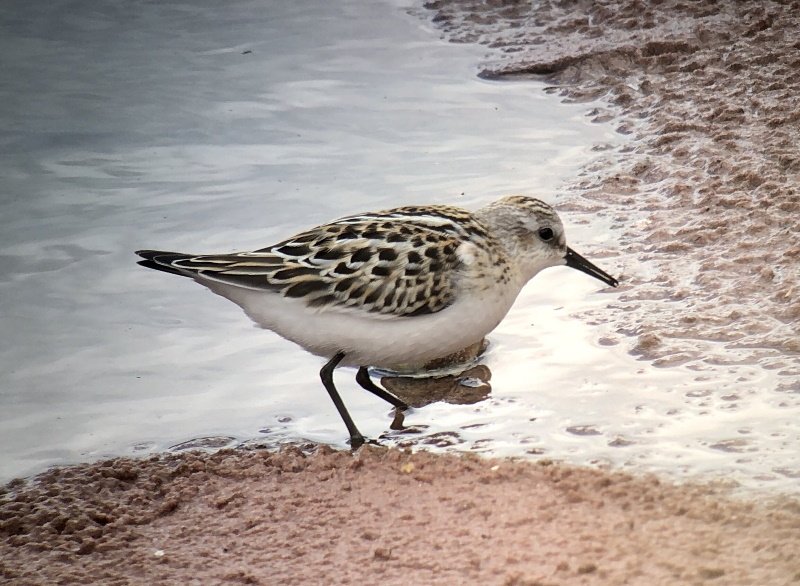
Colour Ring Report
Black-tailed Godwits


YW-LYflag
Ringed in northern Iceland in July 2012 as a chick.
In October 2012 it was recorded at RSPB Oakenholt on the Dee Estuary
and has been a regular on the estuary ever since with a total of 208
records.
It's been recorded 25 times at Burton Mere Wetlands, 36 times at the
Gilroy scrape (West Kirby) and 106 times at the Caldy Wildfowl
Collection. In 2021 it decided to do something a bit different and it
was on South Uist in April (obviously on it's way to Iceland) but more
unexpectedly it was on Fair Isle in July. It then turned up on the
Humber estuary in August before finding it's way back to Burton in
December that year.
This year, 2024, it was at Burton Mere Wetlands in
January, and it was there again in early August after it's return from
Iceland. Since then it was spotted at Caldy Wildfowl Collection being
recorded a further four times in August.
Take a look at the two photos above. When I saw the bottom photo I was convinced it was a different bird with two yellow rings on the left leg. But it turned out that the bottom ring was really the white ring which had got discoloured, and you can still see white at the top of the ring. Also note the yellow flag which has some grey gunge on it, not the only bird to be so affected this year. The top photo, taken in 2020, shows the rings as they should be, looking brand new even though the bird was eight years old by then. It's unusual for rings/flags on the tibia to get so discoloured, we do see some with rings on the tarsus which certainly get stained but, even then, you can usually tell what the colour should be. I've never seen a white ring before to look so yellow!
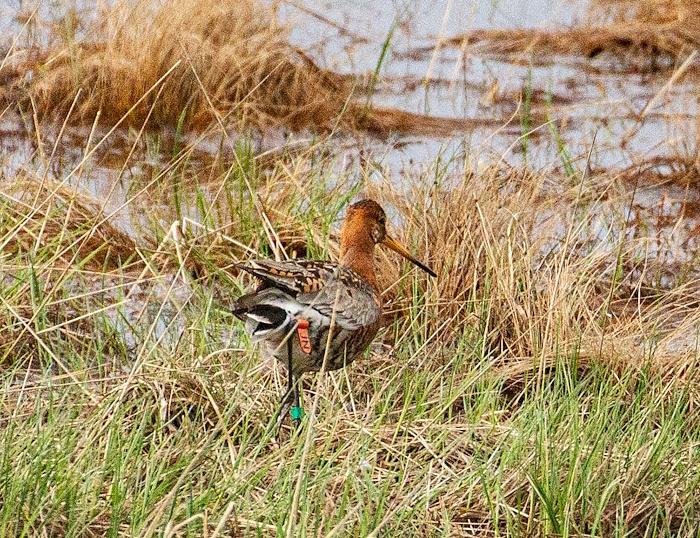
G - Oflag(JN)
One
of 20 caught and ringed this last winter (2023/24) at Bangor Harbour.
It's good to have some locally ringed Black-tailed Godwits to find and
at least half of these have already been recorded on the Dee Estuary.
Having been caught at the end of January 2024 Oflag(JN) was first seen
at Burton Mere Wetlands in February and into March before moving to
Caldy in April. It was great that it was both seen and photographed in
Iceland in early June before returning to Caldy at the end of July, and
remained there during August.

Burton Mere Wetlands, August 13th 2024 © Mark Woodhead
L3BRRY
Ringed by a Dutch team visiting the Tagus Estuary (Portugal) in January
2019.
April 20th 2020 saw it at RSPB Middleton Lakes (just NE of Birmingham)
and a week later it was on it's way to Iceland as it was spotted on
Tiree on April 27th. The record from Cemlyn Bay (Anglesey) in July that
year was a nice surprise.
The following winter it was again on the Tagus Estuary and must have
been heading north again when it was recorded at Lairoux on the French
Atlantic coast in March 2022. That summer it was one of the first to
arrive back from Iceland being at Seaforth on the early date of June
26th and RSPB Oakenholt on July 3rd. There is one record of it on the
Tagus estuary again in February 2023 before it was seen at Burton Mere
Wetlands on August 13th 2024.
Ringed Plover
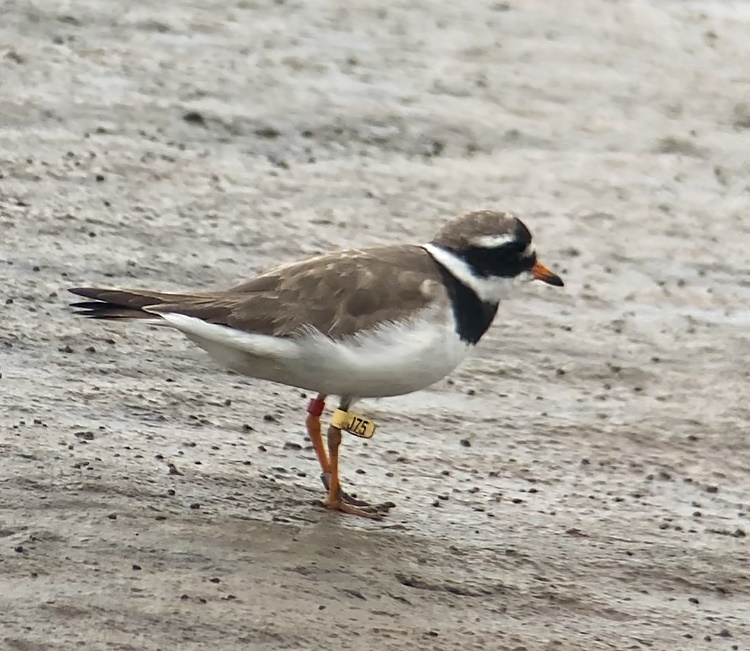
R - Yflag (J75)
Ringed at Kragero (south-west of Oslo), Norway, on
08/09/2020.
Recorded at Meols on 28/08/2024.
Nearly all our Ringed Plovers are passage birds and
we don't see many with rings, so great that Sean managed to find this
one.
Shelduck

Blue (JN)
Ringed at Martin Mere in June 2021.
It was a recorded at Martin Mere numerous times in the winter of
2021/22 and was also present there in June and July 2022.
Recorded at West Kirby in September 2022 and again at Martin Mere the
following winter.
It was at Thurstaston in September 2023 and again on 24/08/2024.
Common Gull
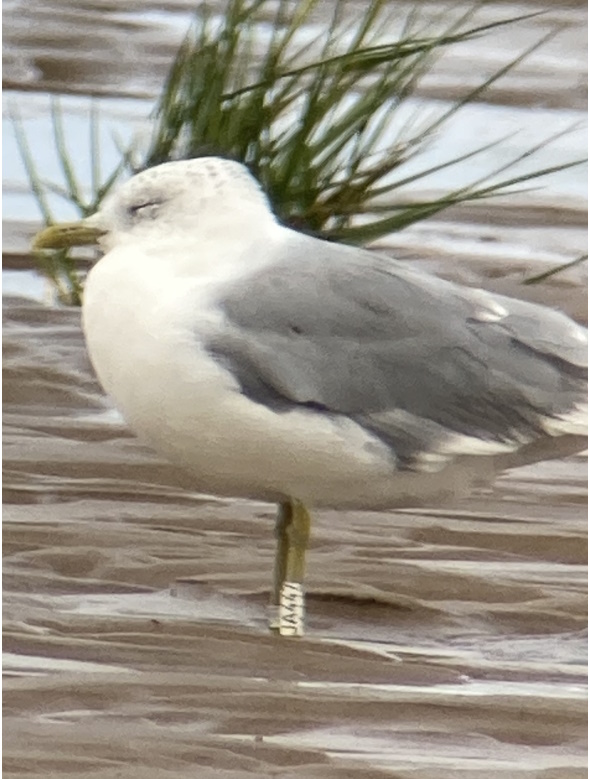
White - JA447
Ringed near Bergen, Norway, in June 2016.
Recorded at Hoylake in June 2016, October 2017, August 2018, September
2021 and 21/08/2024.
It was also seen back near Bergen in July 2021 and April 2024.
It's always nice to a returning bird, and it's been almost
three years since we last saw this one.
Black-headed Gull
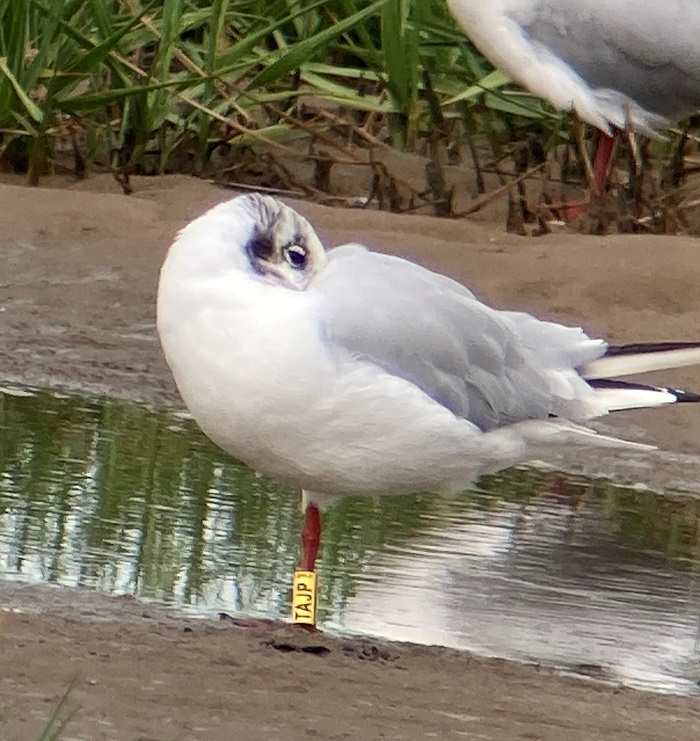
Yellow TAJP
It was an adult with chicks when it was ringed in Poland, near Warsaw,
in June 2019.
Recorded at Leasowe in December 2020, it was back in Poland in April
and May 2021.
It was again at Leasowe in February 2022 and August 2023 before being
seen on Meols shore in July and August 2024.
Colour Rings were recorded by Richard
Smith, Stephen
Hinde, Colin Schofield,
Tony Ormond, Sean O'Hara, Steve Williams, Alex Jones, Richard
Speechley, Paul Ralston, Gavin Thomas, Les Hall, Mark Woodhead, Graham
Connolly and Peter Haslem.
Richard Smith
August Bird News
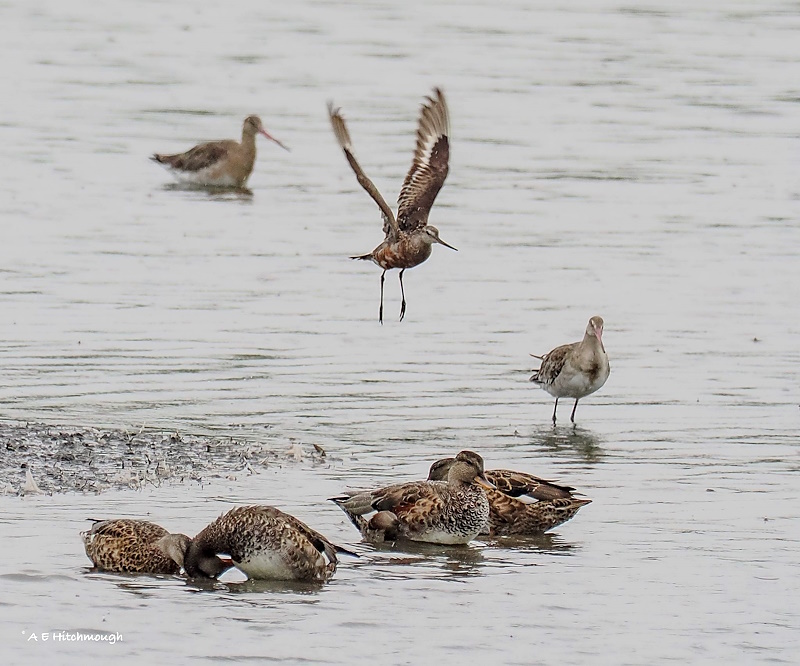
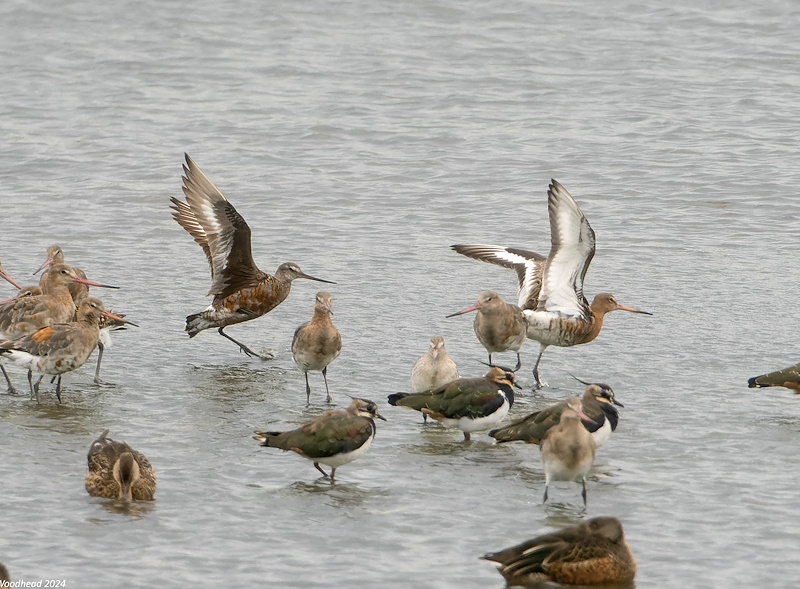
Burton Mere Wetlands, August 13th © Mark Woodhead
This one is a REAL MEGA! A Hudsonian Godwit, looking
a bit like a cross between a Bar-tailed and Black-tailed Godwit, was
first seen on the evening of the 12th before news was released the
following day after the identification had been confirmed. This is only
the sixth record for Britain. It was seen at Burton Mere Wetlands (both
the Cheshire and Welsh side of the border) as well at Connah's Quay NR
and later at Oakenholt Marsh south of Flint Castle up to the end of the
month. It's a first for Wales and a first for Cheshire and Wirral. This
is a real long distant migrant flying all the way from it's breeding
grounds in northern Canada and Alaska to the southern South America
with many doing the journey non-stop.
See https://storymaps.arcgis.com/stories/1ebf7c221c654e6d8a06355501f40cb9
for more details.
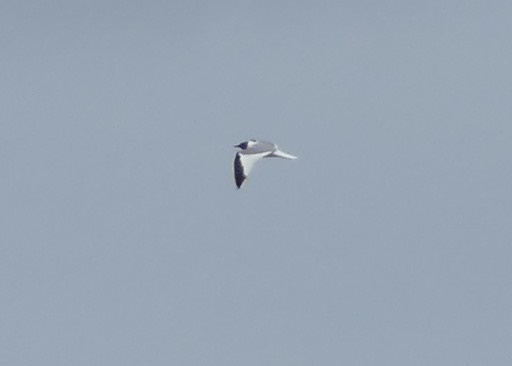
The Flint Castle area came up with two more great rarities, no doubt
helped by the presence of a large number of twitchers, with an adult
Sabine's Gull on the 21st and a Lesser Yellowlegs on the 24th.

Other than that it was a pretty quiet month! Ospreys are always
scarcer on their return journey than in spring so it was good to see
one fly west past Hoylake before gaining height as it flew over Hilbre
on it's way to North Wales. Max count of Black-tailed Godwits at Caldy
was an impressive 5,700 and four Spoonbills, which spent most of the
month at Parkgate, had increased to seven by the month-end.
Sea-watching was a bit disappointing although a few Arctic Skuas were
spotted towards rhe end of the month including 13 from Hoylake on the
25th.
There were a good number of waders present during
the spring tides without being spectacular, it was good to see a small
passage of Whimbrels coming through on the 20th, the ones I saw flew up
high before heading south-west calling and I imagined that their next
stop could well be West Africa!
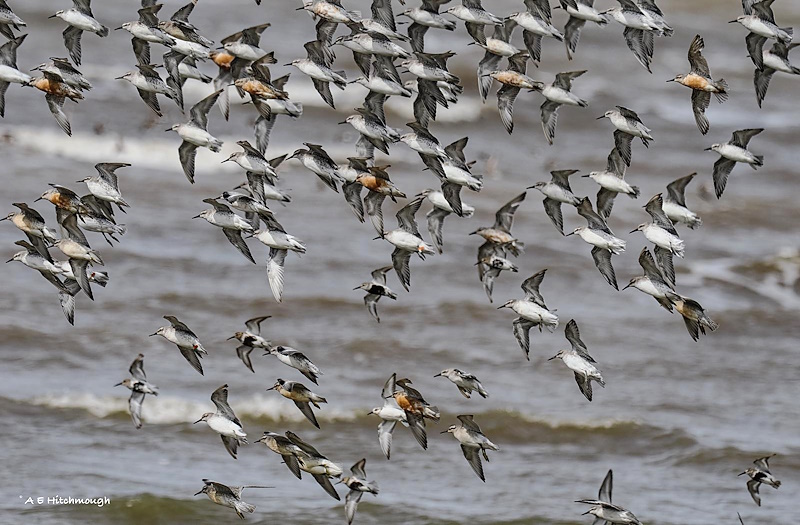
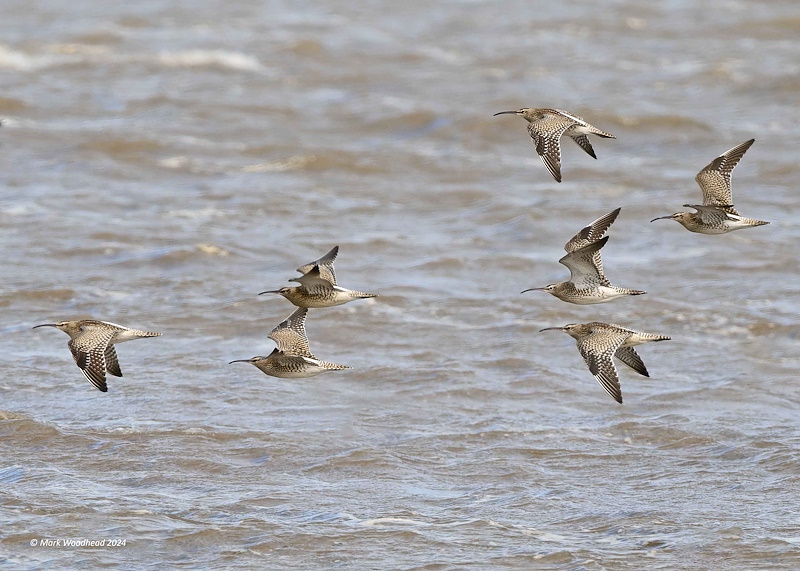
What to expect in September
September is all about sea-watching - or at
least it will be if we get some north-west gales. Ideally we want a
prolonged gale blowing for at least two days around the middle of the
month to bring in a hundred plus Leach's Petrels. In those conditions
our Liverpool Bay coastline is the best in Europe for seeing these
Petrels, and it is wonderful to watch such delicate looking birds
flying over a raging sea. There will be a lot more than Leach's
Petrels, of course, and we would expect Grey Phalaropes, Sabine's Gulls
and all four species of skuas - Long-tailed, Great, Pomarine and
Arctic, along with the more usual auks, Kittiwakes, Gannets etc.
As shown in the above article we should see a
few Little Stints this month, and juvenile Curlew Sandpipers will be
coming through. We've done quite well in recent years for the latter -
see my Curlew
Sandpiper 2023 article.
There's always a possibilty of a rarity in September - last year we had
a Baird's Sandpiper at Hoylake/Meols and Pectoral Sandpipers at Burton
Mere Wetlands. The latter site should be good for Cattle Egrets, we had
a remarkable 15 together there last year, attracted by the presence of
some Snowdonian ponies. Also last year we had 13
Spoonbills at Parkgate and there will be a few Great White Egrets
around - in July this year we had a total of 22 counted for WeBS. In
that same count there were 427 Little Egrets on the estuary, the third
ever highest total for the estuary and by far the highest count for
July, no doubt because of a good breeding season.
September Highest
Tides:
Sep 18th 12.01hrs (BST) 9.7m
Sep 19th 12.42hrs (BST) 9.9m
Sep 20th 13.22hrs (BST) 9.9m
Sep 21st 14.02hrs (BST) 9.7m
